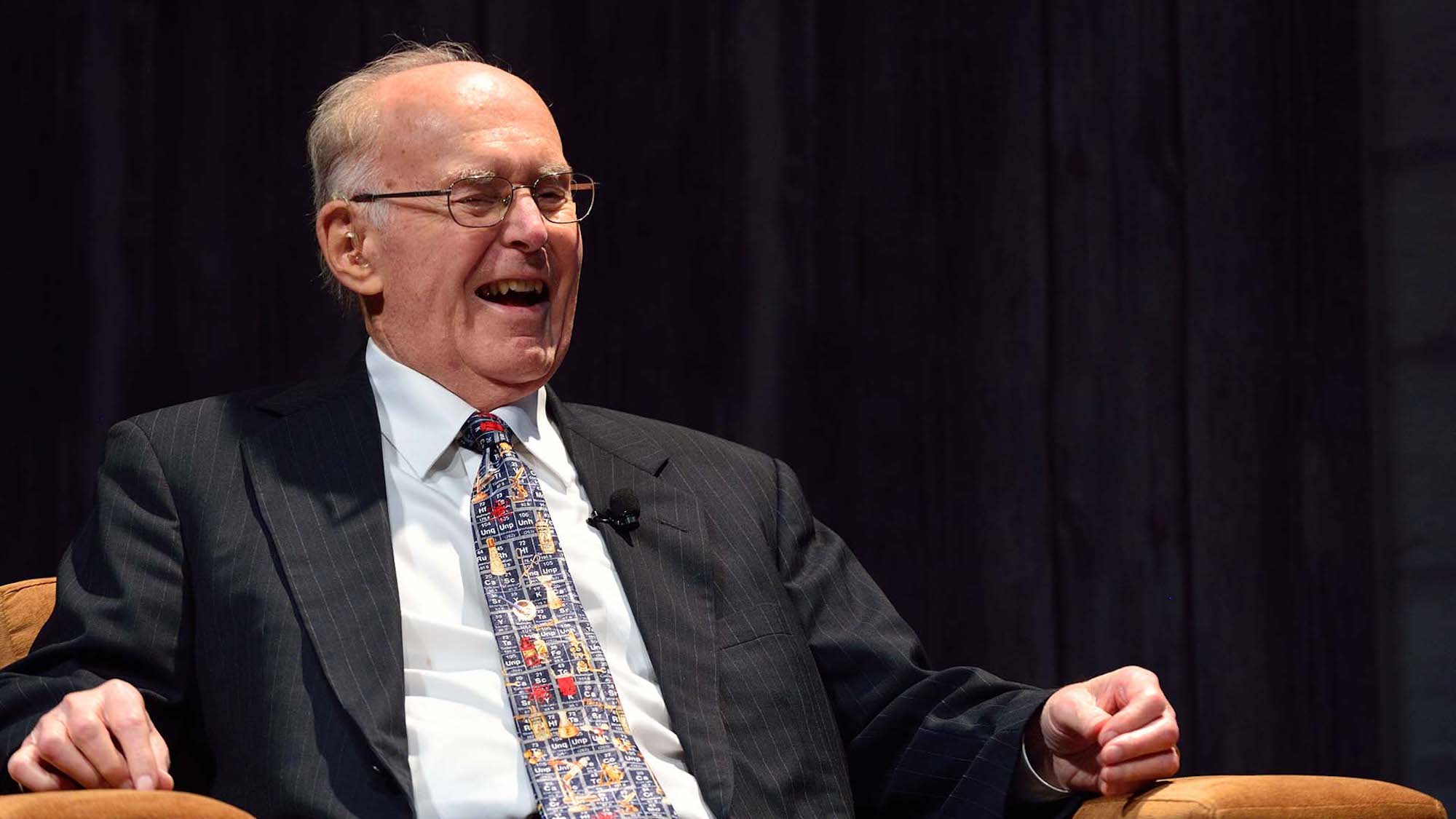

Gordon Moore, co-founder of Intel and one of the most influential minds in computing history, died on Friday at his home in Hawai’i at the age of 94. Known as one of the architects of modern electronics for his work on transistors and microprocessors, his observations on the trajectory of computing advancements—later known as Moore’s law—has proved highly accurate for nearly six decades.
Writing for the 35th anniversary issue of Electronics Magazine in 1965, Moore, a Caltech graduate and engineer, estimated that technological advancements ensured transistors’ physical dimensions would continue shrinking. Roughly double the number of transistors, he forecasted,could fit on the same sized chip every year. A decade later, Moore revised this timespan to two years, but this general idea proved remarkably stable over the ensuing years. As PC Mag notes, Intel’s first commercially available microprocessor contained 2,250 transistors in 1971. Apple’s M2 Max chip, released in January, contains 67 billion transistors.
“Integrated circuits will lead to such wonders as home computers—or at least terminals connected to a central computer—automatic controls for automobiles, and personal portable communications equipment,” Moore wrote in his 1965 article, “Cramming More Components onto Integrated Circuits,” twenty years before PCs revolutionized computing and forty years prior to the iPhone’s debut.
[Related: Here’s the simple law behind your shrinking gadgets.]
Moore’s law guided the trajectory of Intel and rival processor companies’ innovations for years. The law was recently declared “dead” by Nvidia CEO Jansen Huang as advances have slowed in recent years—an inevitable conclusion to Moore’s observation as transistors’ physical limitations are reached and supply costs increase. However, this is an assertion that is not without its detractors. Intel, for its part, maintains Moore’s law is still in effect, and expects 1 trillion transistors per chip by the end of the decade.
Regardless of when Moore’s law finally taps out, its guiding principles helped propel the modern computing industry for years, providing a benchmark for companies as electronics quickly integrated themselves into the fabric of global society. As physical limitations make themselves known, researchers have turned to next generation advancements like quantum computing to continue cutting-edge innovation. “Gordon’s vision lives on as our true north as we use the power of technology to improve the lives of every person on Earth,” Intel CEO Pat Gelsinger said in a statement on Friday.
“All I was trying to do was get that message across, that by putting more and more stuff on a chip we were going to make all electronics cheaper,” Moore said in a 2008 interview. Outside of his electronics advancements, Moore started an environmental protection foundation alongside is wife using $5 billion of his own Intel stock, and remained an ardent financial supporter of the Search for Extraterrestrial Life, or SETI.
